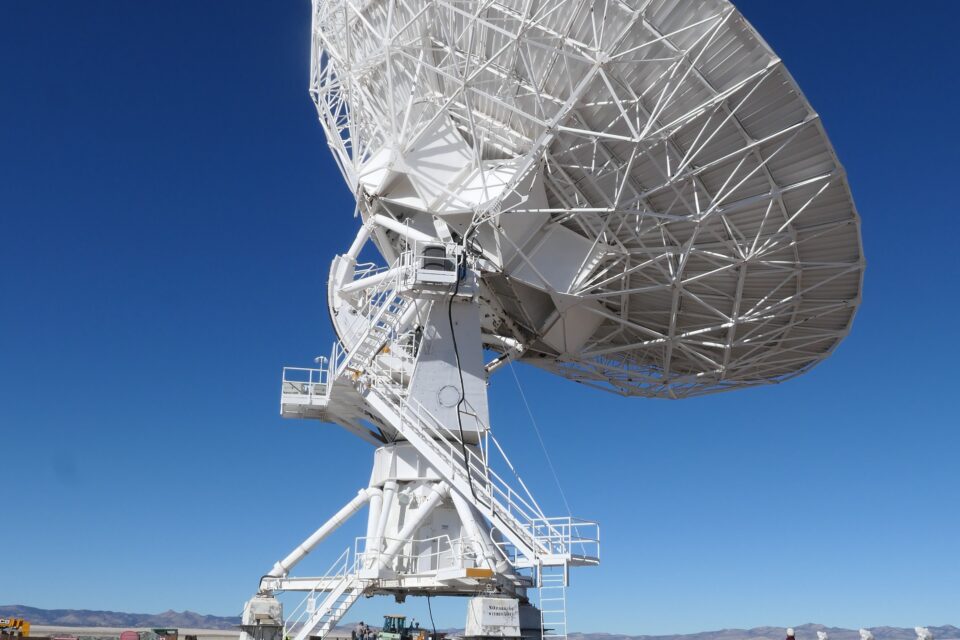FEBRUARY 12, 2024: Today we needed to start the two-day drive back from Albuquerque to Phoenix. We had two options – the northern route through Flagstaff or heading south through Payson, Arizona. Both routes go through mountains, and both recently had traveler advisories in effect due to snow. We would need to stay one night somewhere along the way, and we were afraid of the motorhome water pipes freezing if it was very cold. We thought going south had a better chance of warmer weather.
As Mark previously said, Albuquerque would have a hard act to follow after Santa Fe. And so it was. We loved Santa Fe and did not develop any special attachment to Albuquerque. It was easy to say goodbye this morning.
For tonight, I made reservations at the KOA campground in Holbrook, Arizona. This would ensure that we would have electricity during the night to run the furnace. To reach Holbrook would take us at least five hours of driving.
The first hour of the drive was to head south on Interstate 25 until the town of Socorro. We usually try to avoid the interstate highways, even though they get you to your destination faster. They are often lined with billboards that distract from the view. In addition, there are usually many big trucks on the road, and when they pass the motorhome, it is like a big gust of wind pushing us off the road. We prefer the slower, smaller roads, the more desolate, the better.
A little after leaving Albuquerque we crossed over the Rio Grande. We left civilization behind and all around was beautiful, barren desert scenery.
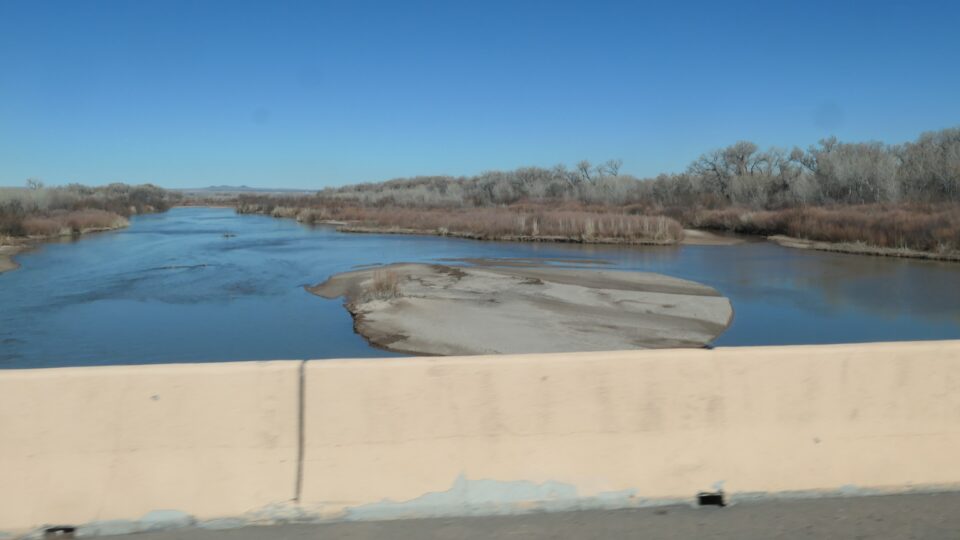
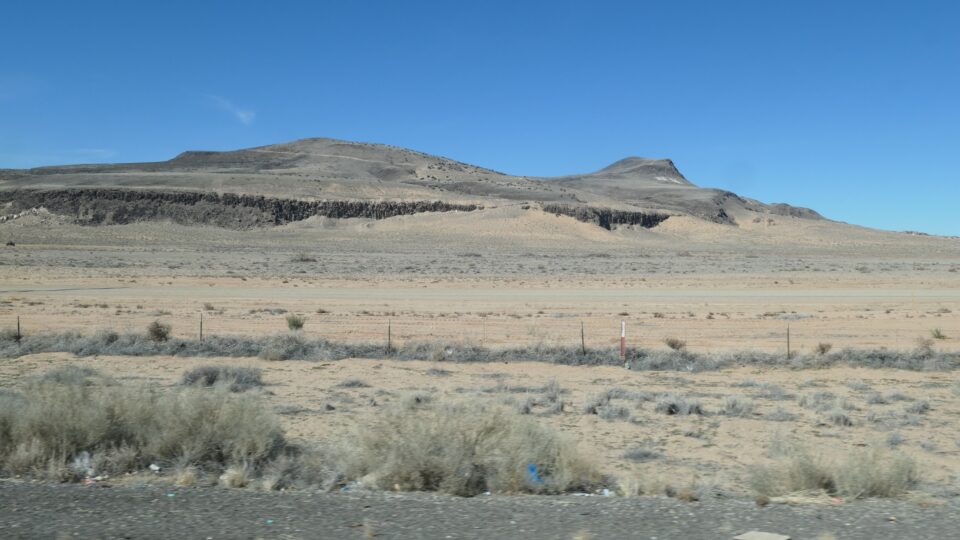

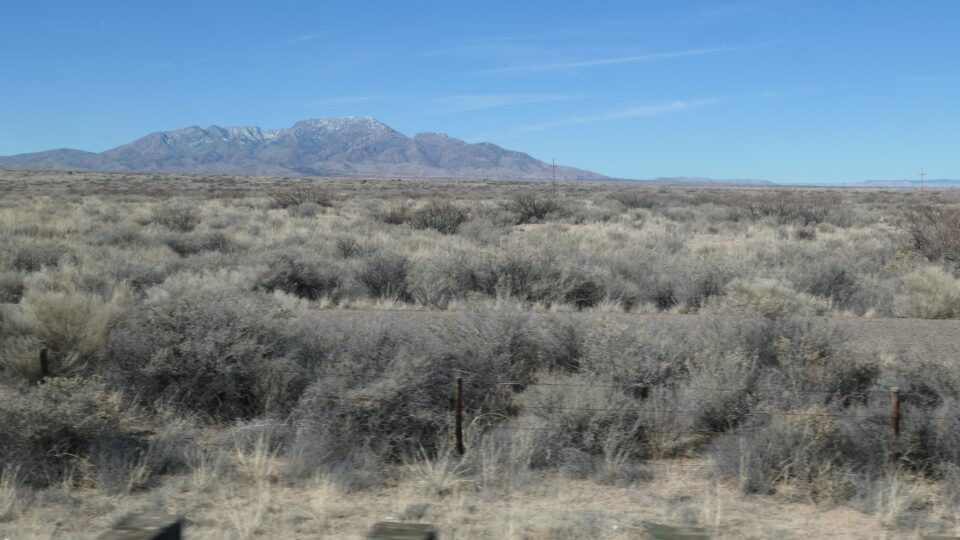
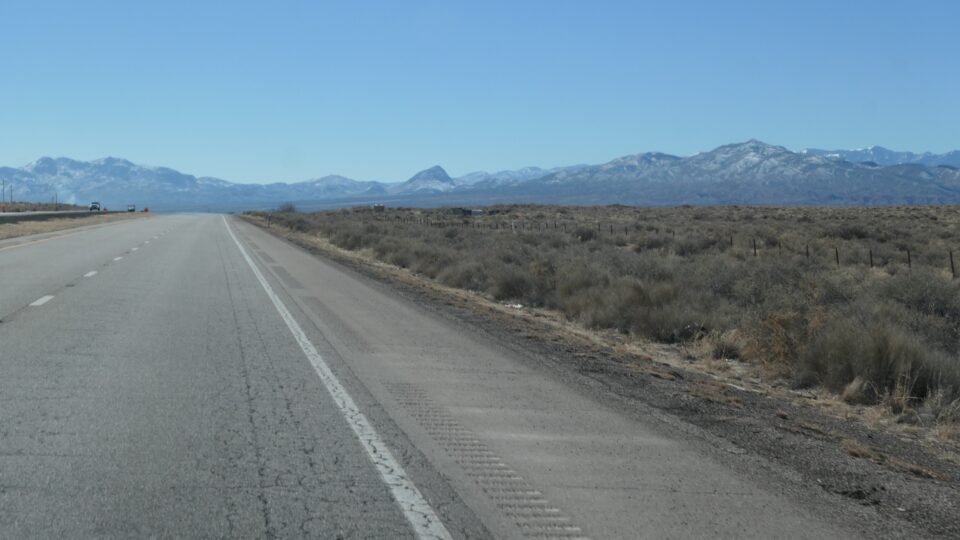
We took a break at the Walking Sands Rest Area where we were greeted by a Beware of Rattlesnakes sign.
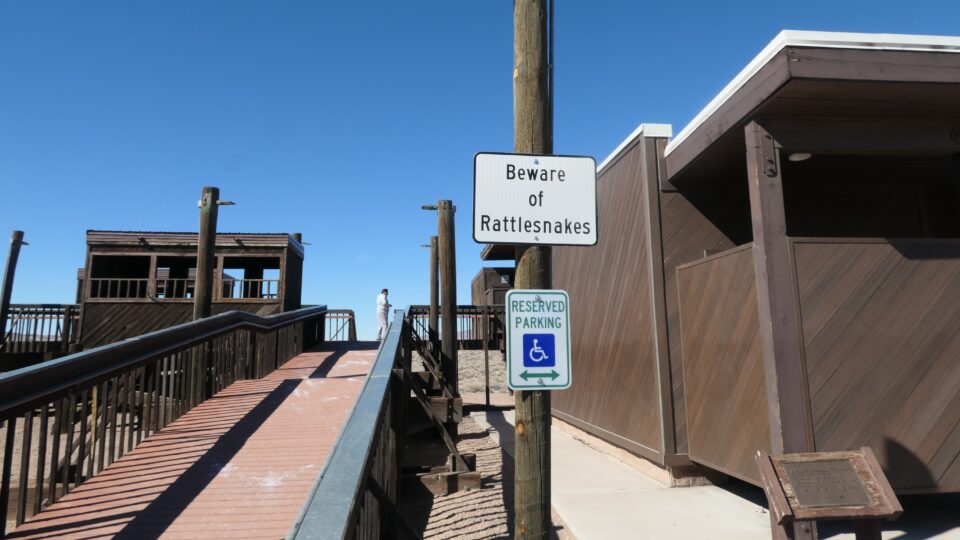
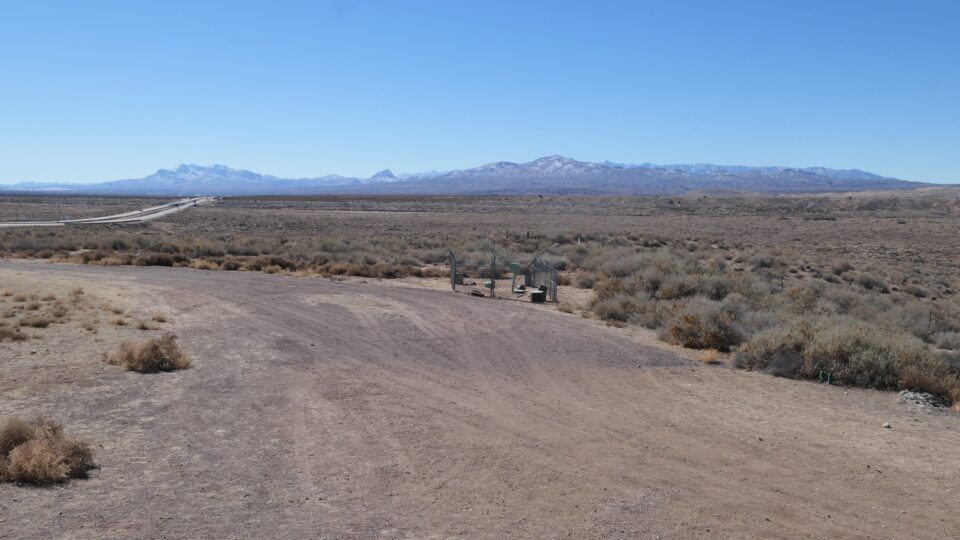
At Socorro we left the main highway and turned onto a two-lane road heading west. Here we could drive many miles without seeing other cars. Houses, mostly ranches, were far between. Uninterrupted beautiful scenery everywhere. This was the type of road we most enjoy. We were heading towards our next stop: The VLA – The Very Large Array.
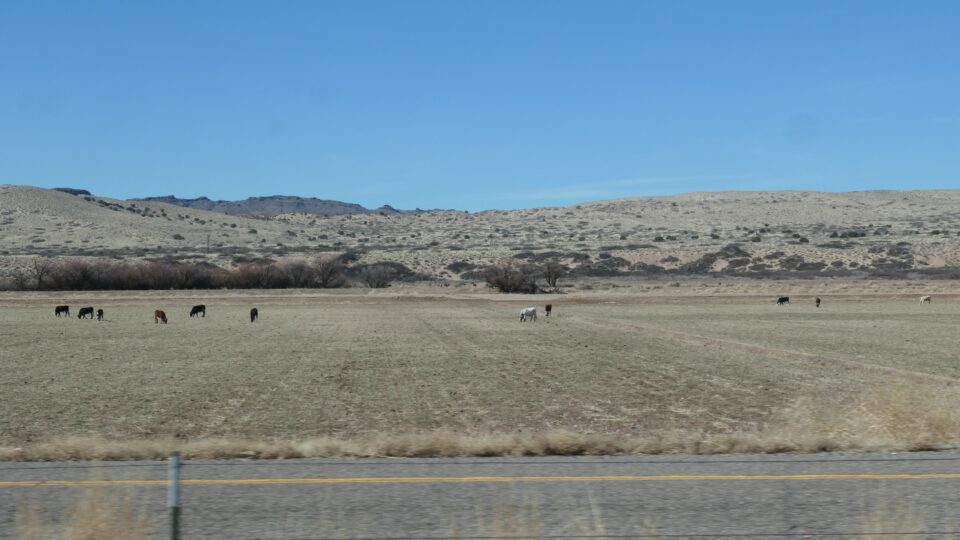
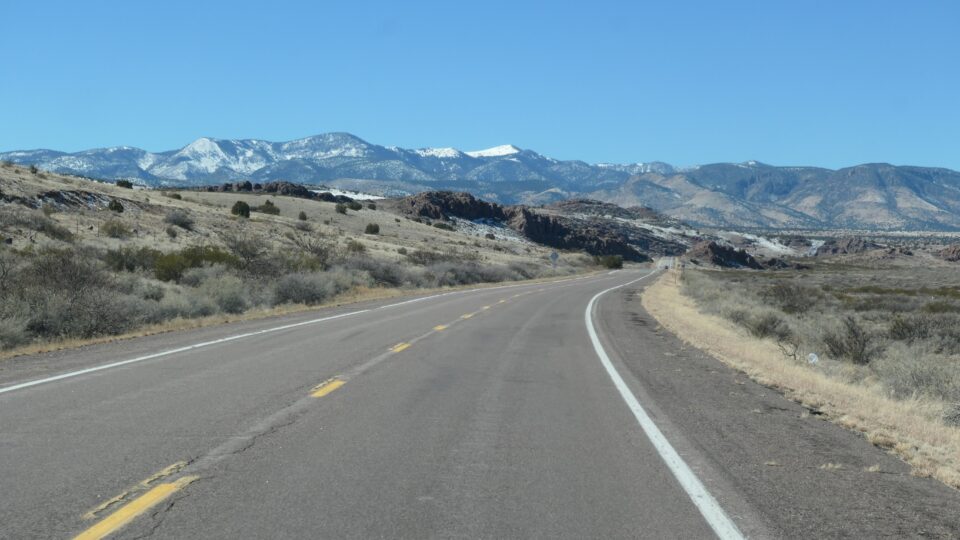
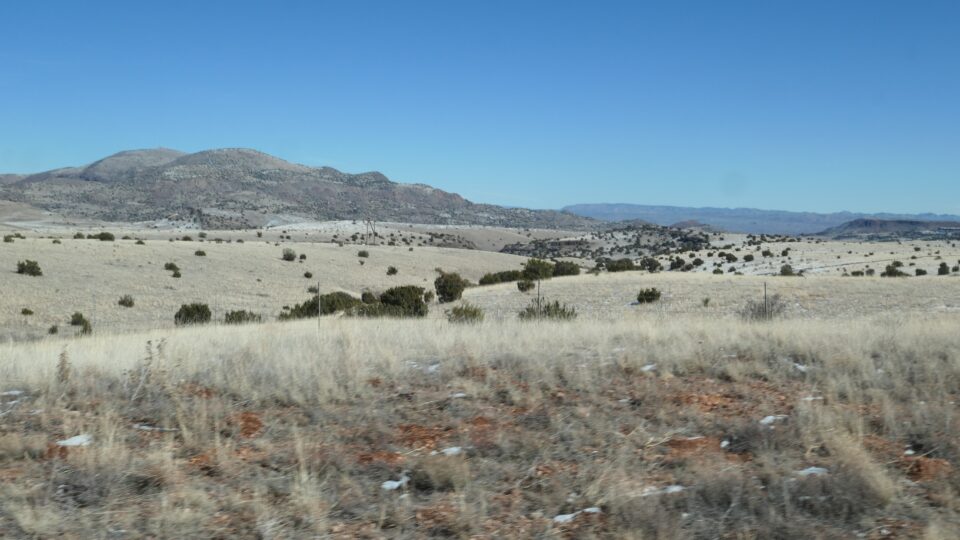
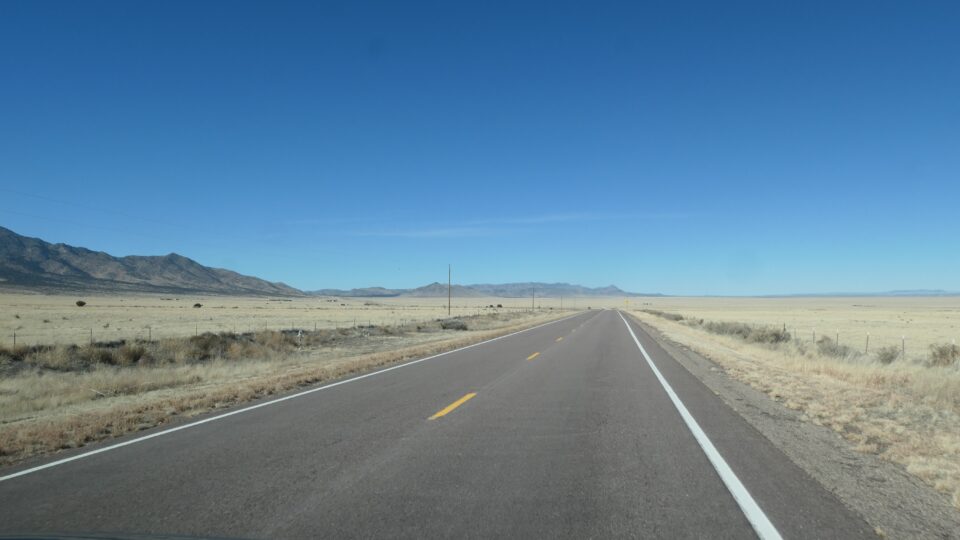
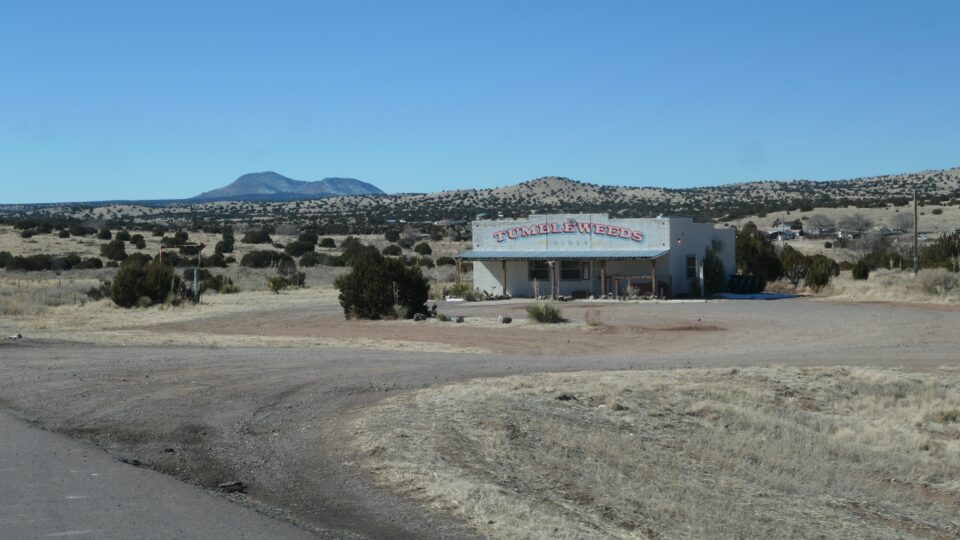
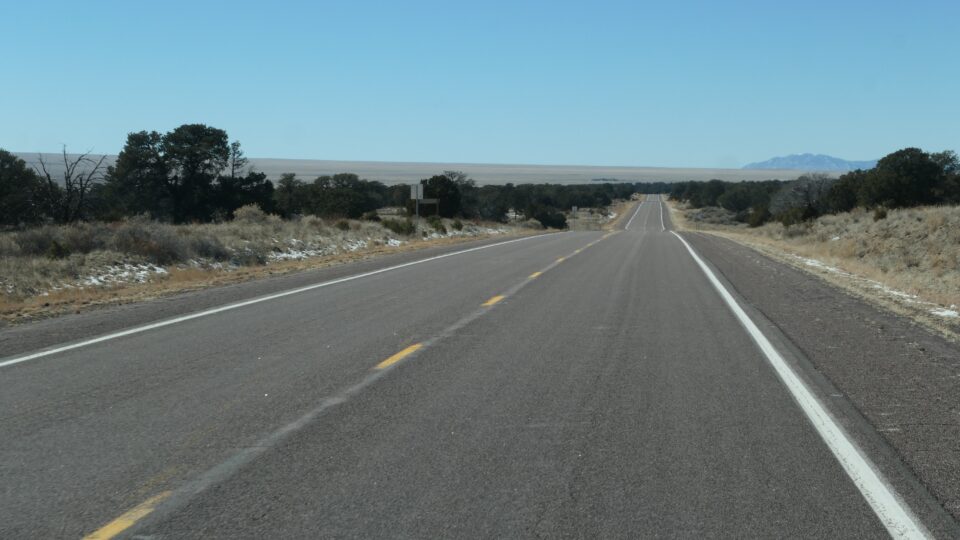
What is the Very Large Array? The VLA is the most versatile, widely-used radio telescope in the world. What exactly does this mean? We were soon to find out.
As we approached the VLA, on a large flat plain in the middle of nowhere, we saw a field with what looked like many large satellite dishes.
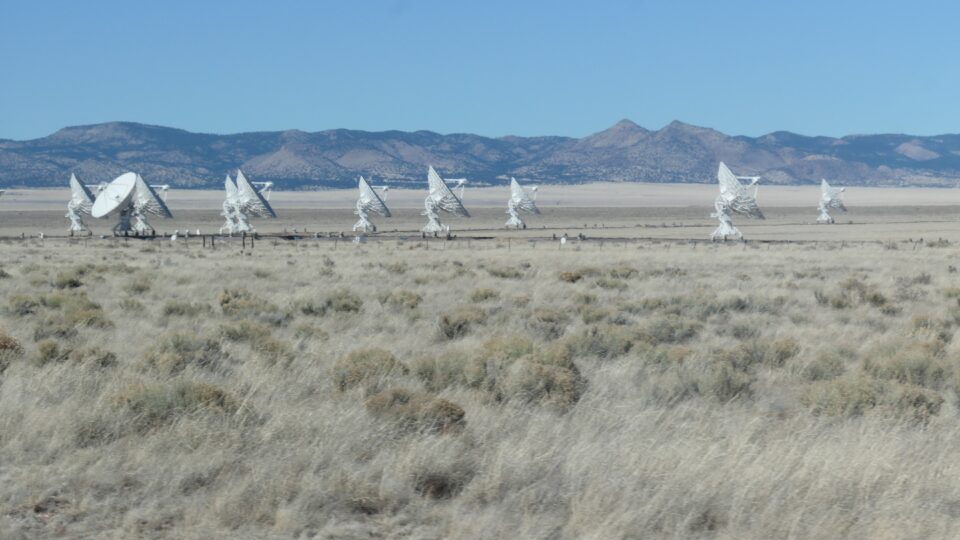
We drove past the welcome sign and parked at the Visitor Center. This was the first time we went to a visitor center and there was absolutely no one inside. Near the front door was a terminal to pay the $5 entrance donation. It was self-service, totally unmanned. On the door of the gift shop was a sign that it was closed due to a staff shortage. Weird to be here all alone but eventually some other tourists joined us.
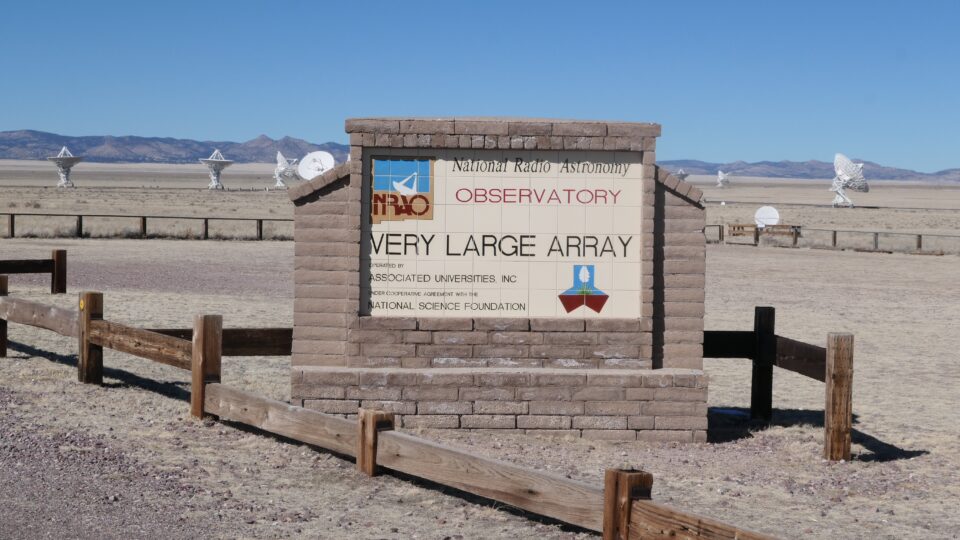
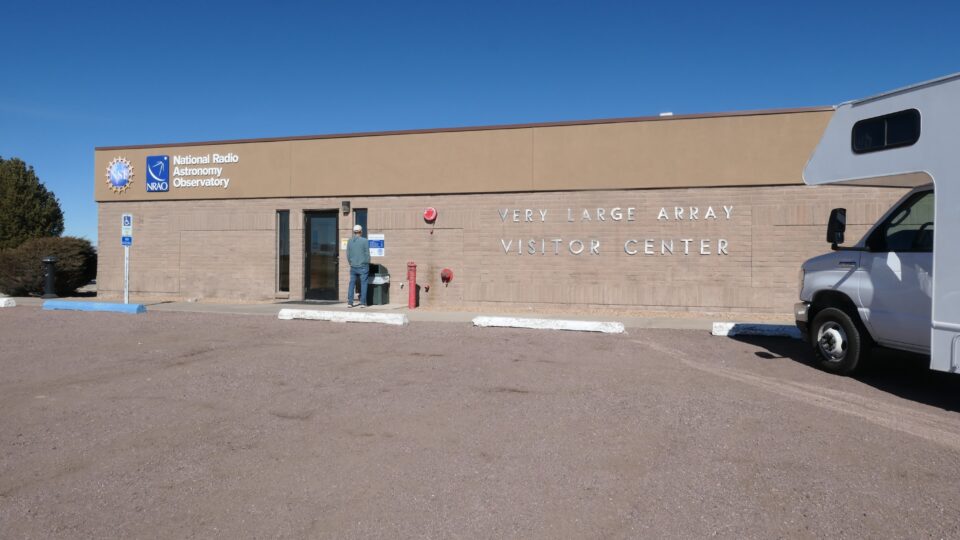
In the main room of the visitor center were several displays, but what was most informative was a series of movies describing the VLA.
We learned that basically the VLA is a group of 27 radio telescopes. They are always configured in a Y pattern, and that Y has 4 basic configurations – A, B, C, and D. The difference between the configurations is in how spread apart the telescopes are. In the D configuration, when they are the closest to each other, the corners of the Y are less than a mile apart. In the A configuration they are the farthest apart – over 22 miles.
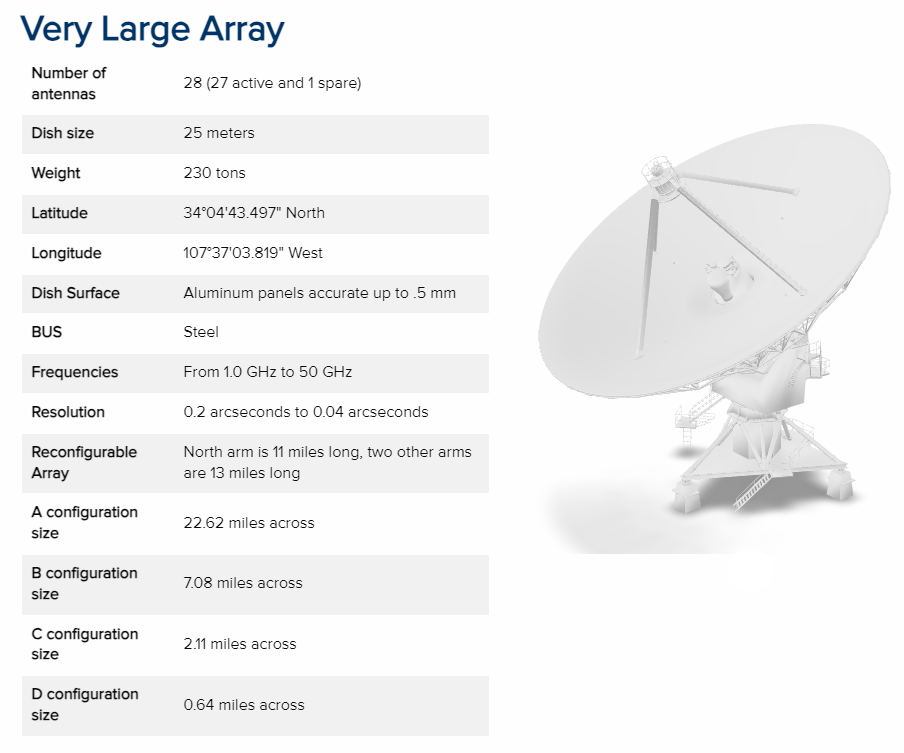
Why different configurations? Each configuration is optimized to see a different part of the universe.

Once all the 27 telescopes in a configuration are in place, they collect radio wave data from the universe and send it to a supercomputer in a data center, that combines and processes the information. Basically the 27 telescopes are working in tandem as one very large radio telescope. In the past, all telescopes were optical and could only be used at night in the dark. These telescopes, that collect radio waves, collect data 24 hours a day. The resolution is so strong that someone in New York could read a newspaper in LA.
Using the VLA, astronomers have discovered new galaxies, seen ice water on Mars, watched black holes, and identified many other new objects.
The size of each telescope is huge – each is 25 meters (82 feet) across and weighs 230 tons. So how do they move them from one configuration to another? There are over 40 miles of train track in the area of the VLA. The telescopes are placed on a special train that fits under them and then slowly brings them to their new location. At the each location are cement blocks, and the telescopes are positioned on them.
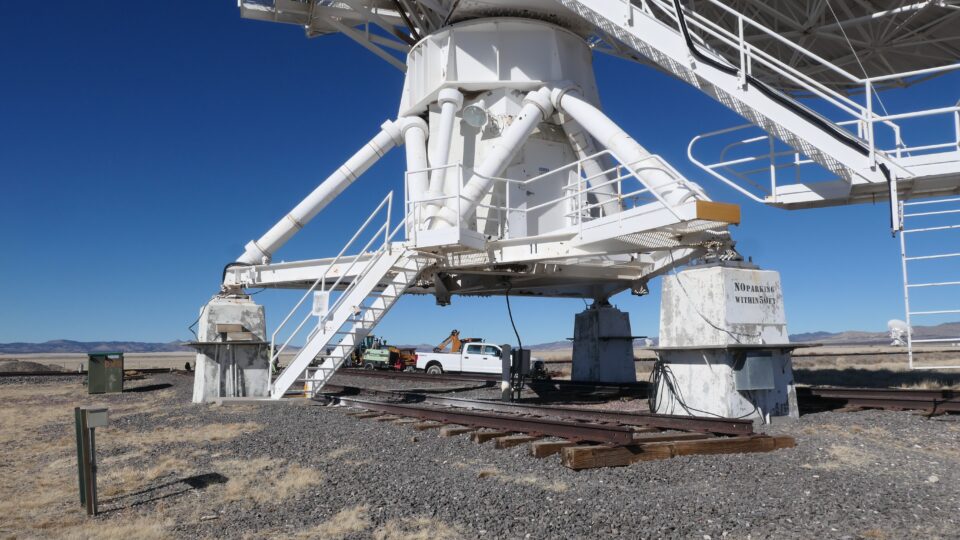
In the visitor center, they advertised a documentary movie called Beyond the Visible narrated by Jody Foster. It can be found on YouTube if you want to learn more about the VLA.
From the visitor center, there is a trail to follow that brought us up close to one of the telescopes. Only then can you really appreciate how big they are.

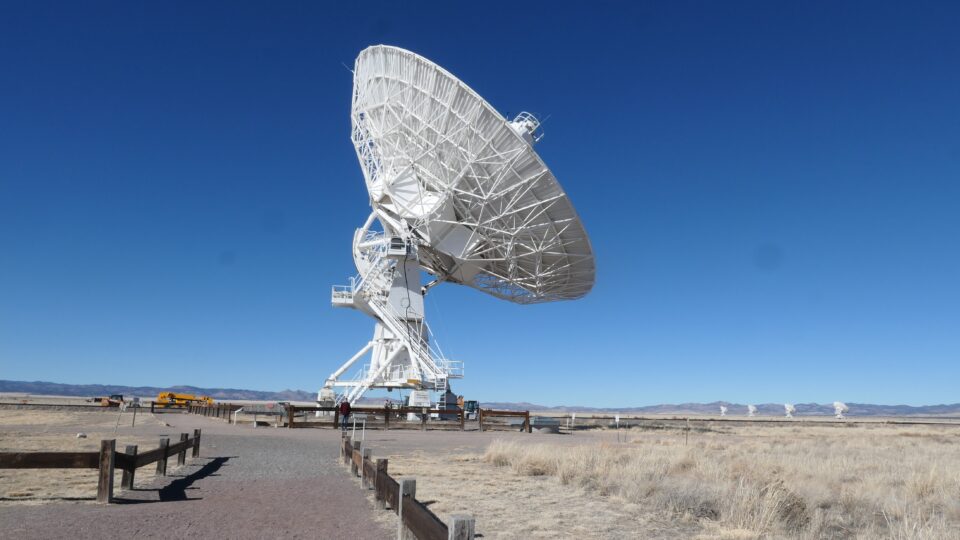
All in all there are 28 telescopes – 27 in operation and 1 spare. The telescopes are being constantly maintained and updated. There is a special building, called the barn, where this takes place. Before leaving the VLA we drove to the barn. Besides seeing a telescope in the barn for maintenance, we could also see up close the train car and railroad tracks used to transport them.

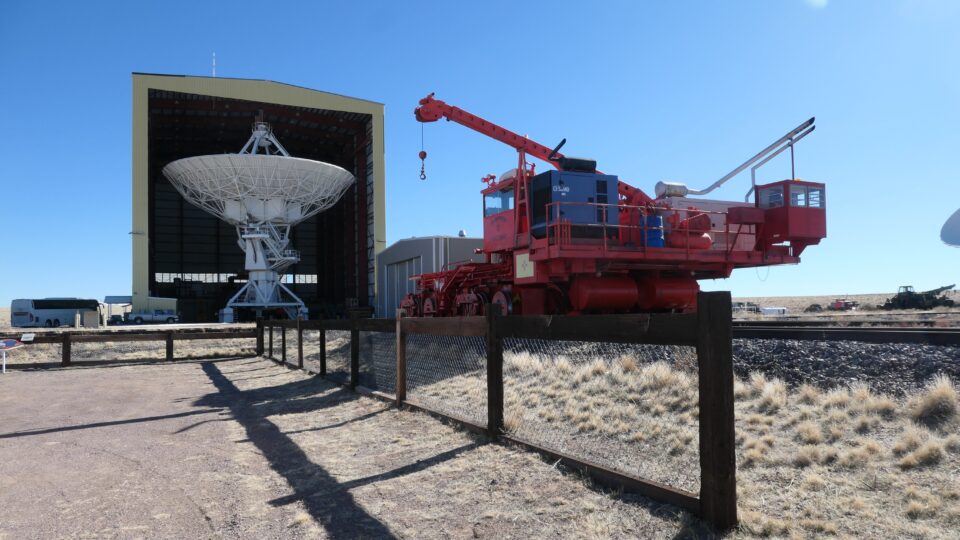
One last note is that a new VLA (ngVLA – next generation VLA), a $2.3 billion project, is being worked on and is expected to launch around 2035. Instead of 27 telescopes, it will have 244, most of them in the Southwest and others will be spread out over several states. The telescopes themselves will also be of a new design.
After more than an hour here, it was time to move on. We still had hours of driving to go. The VLA turned out to be a very interesting place to visit.
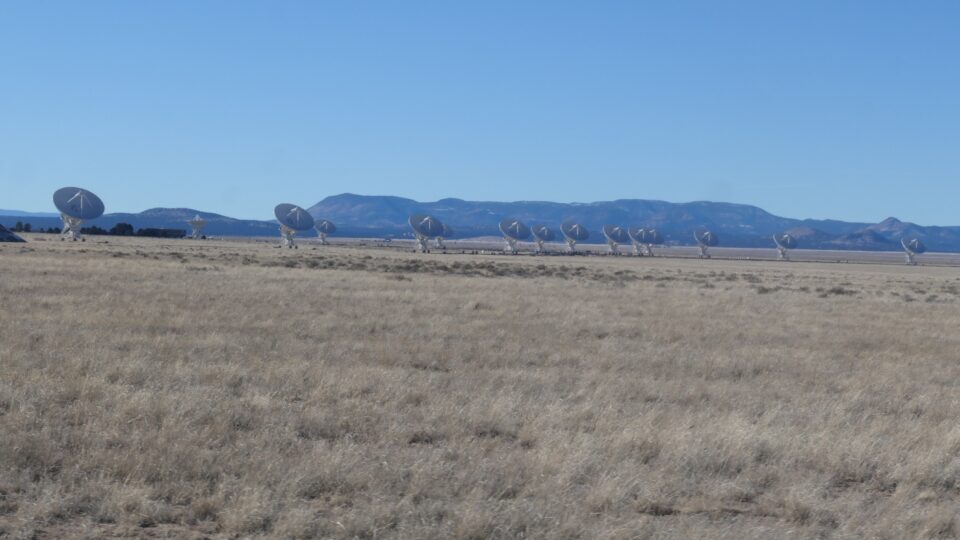
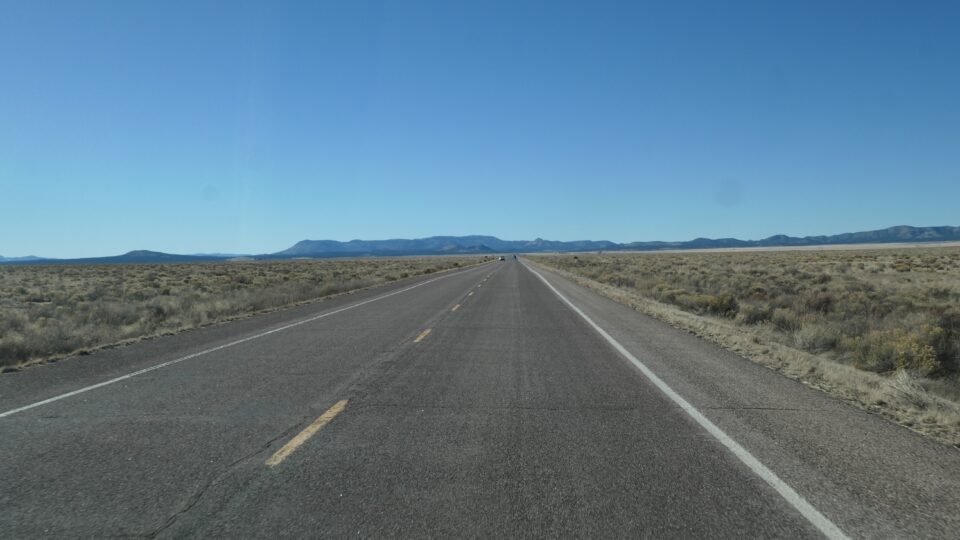
We continued the drive westward and about 45 minutes later we reached Pie Town. In the 1920s, a man named Clyde Norman made his way to the area, opened a store and began serving pies. The town’s reputation for pies grew, and soon people were traveling from all over the country to sample the famous desserts, giving the town its official name. I was looking forward to a large serving of homemade pie, but unfortunately, we found the place closed.
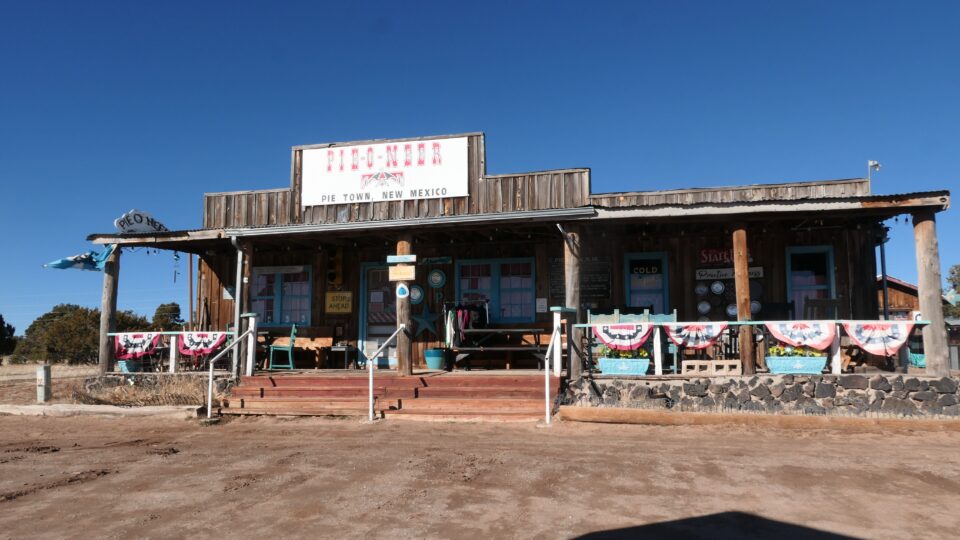
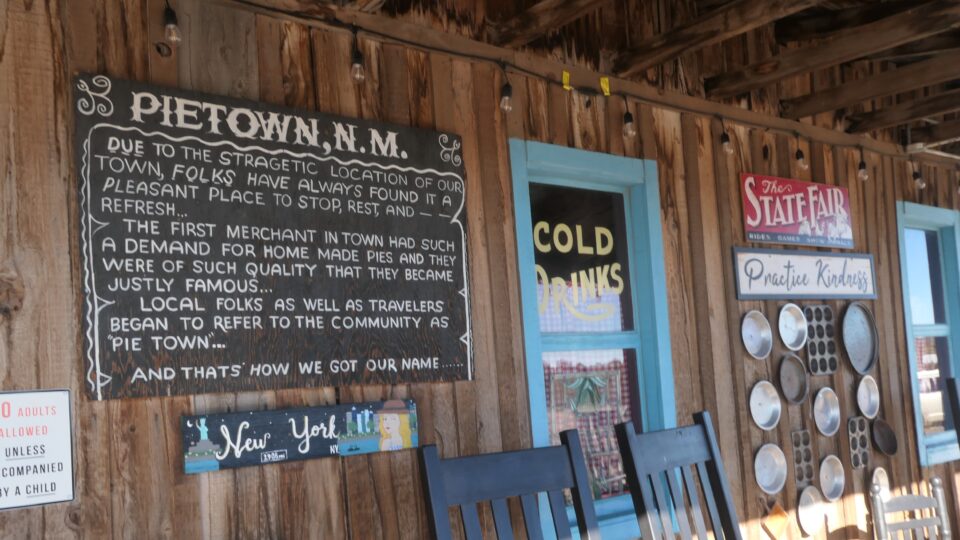
We were now about at the ½ point of today’s drive. There was still at least 2 ½ hours left to go. This was on small roads literally in the middle of nowhere. Being winter, sunset came early, and we were still driving as the sky turned orange. We finally reached the KOA campground in Holbrook just as darkness set upon us.
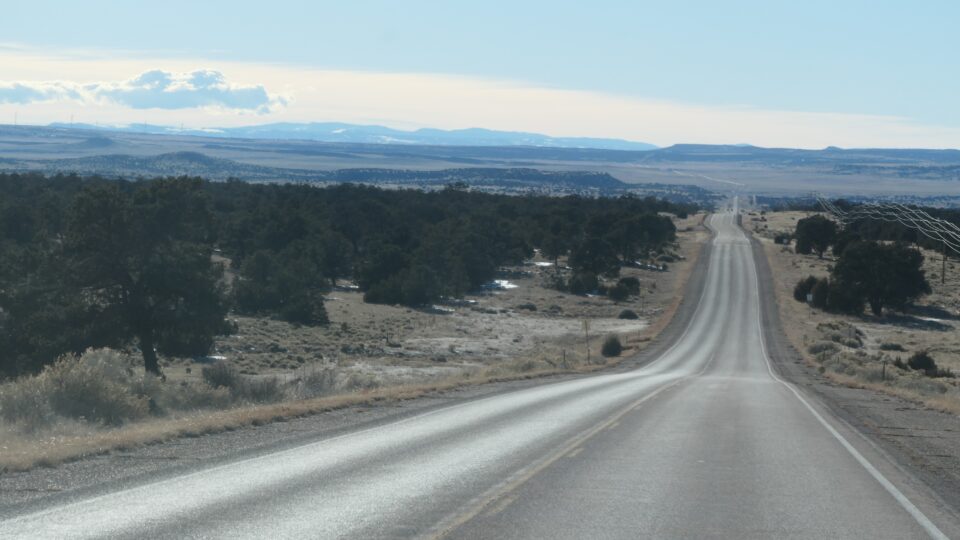

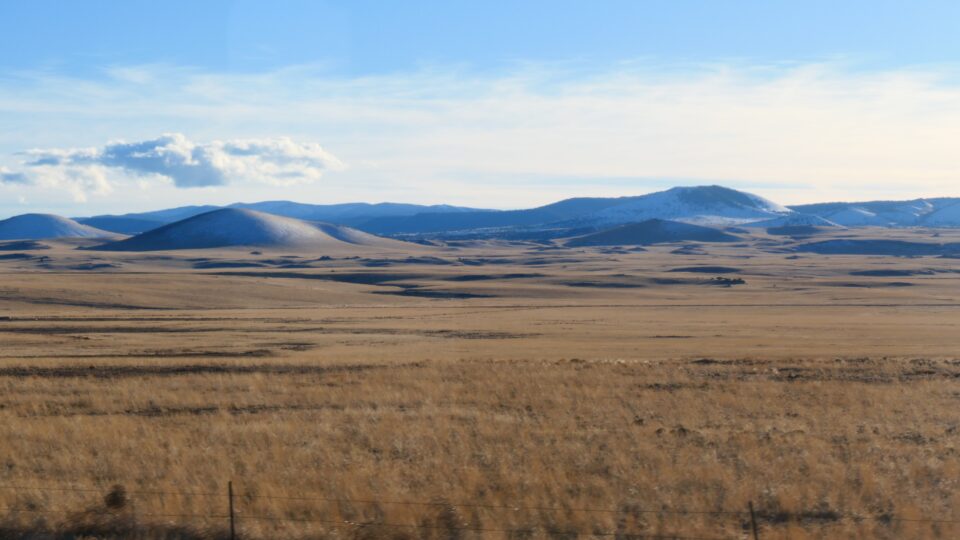
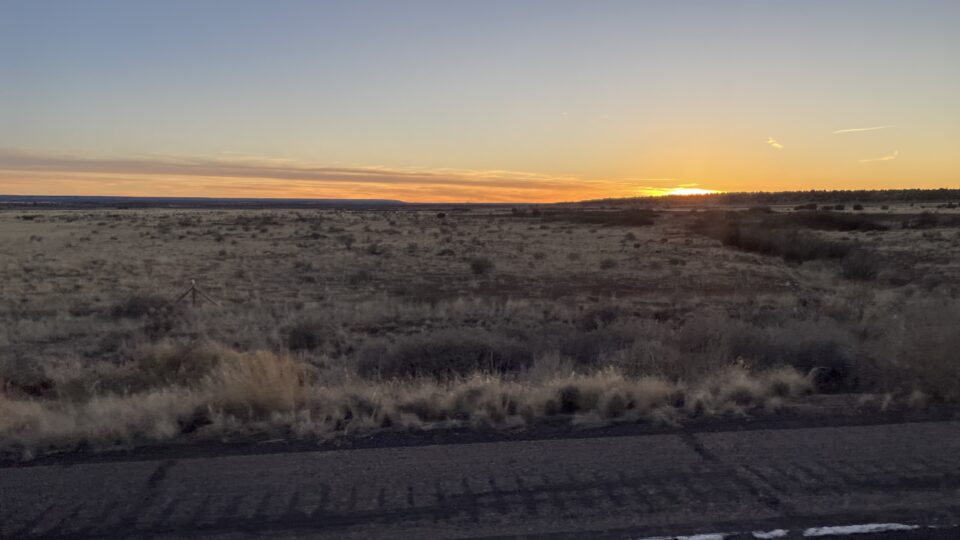
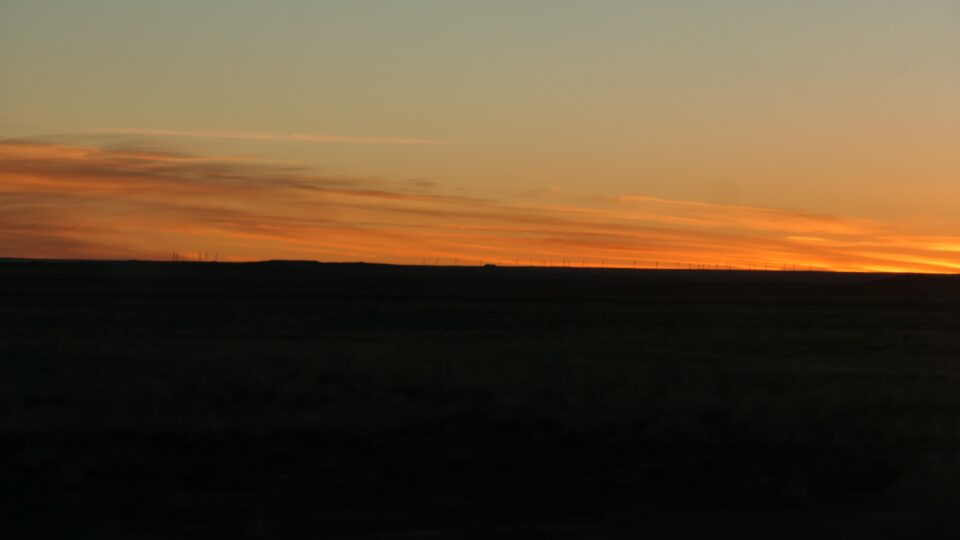
Holbrook is a small town and like some other small towns we visited, it has a bit of Jewish history. As in many other places, the Jews who lived here were merchants. Twin brothers Adolph and Ben Schuster opened their company in Holbrook in 1884. For decades, the Schusters reigned as prominent businessmen in Holbrook. Today, there seems to be disagreement about exactly where their store was located. In one article there is an address, and in a different article, a photo. When we went to the address, it was nothing like the photo. We saw the building from the photo a few blocks away – so we are not sure which of the versions is correct.
Tomorrow we continue towards Phoenix. The drive is supposed to be shorter than today – only about 3 ½ hours – but it involves driving over mountains on a very curvy road in our large motorhome. Hopefully all will go smoothly.
